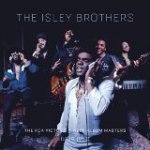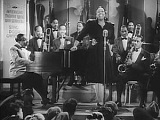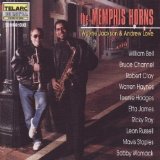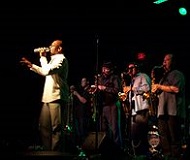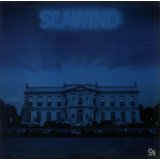 A producer, a photographer and two musicians walk into a pub. Sorry, there isn’t a punchline to this; it’s just what happened. A quick pre-Christmas beer with some music business friends to chew the fat; what do you think we talked about? As always with these semi-unplanned sessions something good came out of it. We’ll leave it to Graeme Wheatley, bass player and songwriter with the band Deep Blue Sea to tell the story, enhancing it with some music trivia. You might want to start this piece whenyou have about an hour to spare because it’s a bit addictive, especially after Riot Towers made a contribution,
A producer, a photographer and two musicians walk into a pub. Sorry, there isn’t a punchline to this; it’s just what happened. A quick pre-Christmas beer with some music business friends to chew the fat; what do you think we talked about? As always with these semi-unplanned sessions something good came out of it. We’ll leave it to Graeme Wheatley, bass player and songwriter with the band Deep Blue Sea to tell the story, enhancing it with some music trivia. You might want to start this piece whenyou have about an hour to spare because it’s a bit addictive, especially after Riot Towers made a contribution,
Sitting in The New Cross House pub the other night with Allan McKay (something that could very easily become habit forming), we were talking about his series of guest articles “High Fives” in Music Riot – sign up now if ya haven’t already!
I’ve written a few before and always like rambling on about whatever, so I was happy to quickly volunteer to write one for this Christmas – even before Allan gave me my first pressie of the year – even if I had no idea what to waffle on about.
We were with Iago Banet, a guitarist from a band that I’ve heard are not that bad and we were talking about a gig we did a few weeks ago. Our singer, Dre Smith, had lost her voice and we were doing the gig as a 3 piece – playing songs we’d never played before. I proudly boasted that I’d sang the entire lyric to “Blinded By The Light” by Brucie without a single rehearsal. Allan asked if I liked Manfred Mann’s version or the original best, then Iago reminded me that after 3 attempts we’d had to abandon “All Along The Watchtower” because I kept getting the first line wrong!!! Pride comes before…
Anyway, this conversation led to the topic of this High Five.
Five covers that I think are better than the original.
Only my opinion here – but when I got to thinking about it – there’s maybe 20 or 30 I could muse about. So, I thought I’d kick it off with two people who I consider to be un-betterable – but concede that in these two occasions, they are bettered.
Song 1
All Along The Watchtower – Bob Dylan – Jimi Hendrix
OK, if you know me at all, you may have heard me at sometime mention the name Bob Dylan. He’s the cat, the verbal acrobat-tery, the lyrical dexterity and temerity in all sincerity. A couple of weeks ago we were playing Bude R&B Festival, which involved a good 4 hour drive back and forth. Amanda Dal, our wonderful drummer, asked me, unprompted, to play the three albums Bob recorded in 1965 that “invented Rock Music as we know it”. Much to Iago’s horror. So we had a great journey back and forth listening to Bob. It’s Amanda’s turn next, so I am going to get 4 hours of singer songwriter LP. The fact that she’s a ringer for Bob makes me favourable disposed to her from the get go – so – I’m ok with this!
Anyway, some people say (fools that they are) that any cover of a Bob song is going to be better than Bob’s version. BUT THEY ARE WRONG!!!! This has only ever happened once in the whole wide universe since the beginning of time. And only one person could a done it. Jimi. Y’know, I’d love to be able to wipe the tape and hear Jimi’s version of Watchtower again for the first time. Can you remember that moment? I can’t. But listen to it now. The swagger, the invention, the sass, the sheer coolness. Four minutes of perfect cool. If Jimi hadn’t recorded it, would we remember the original? Was it just a fairly average track on a subdued and pared back album from Bob who might have been wondering at the time where he was going next. Recorded in 1967 after the “fall” it was a total turn away from the more blues inspired electric albums and a return to his more folkie side, but Jimi took this track, rocked it up, funked it up and delivery to my mind one of the greatest little guitar pop songs of all time.
Oh, BTW, the title of Bob’s album, John Wesley Harding. It was named after a Texan outlaw of that name – only they spelled it wrong!!! He was called John Wesley Hardin.
Compare and contrast:
Song 2
Nothing Compares 2U – Prince – Sinead O’Connor
I was a big Prince fan. Still miss the guy. He might have had demons and might have been just a tad obsessed but look at the catalogue of pop songs. Inventive, fun, joyous, rude, rock and raunch and lovesexy. He made pop a bit dangerous, a lot of fun and a lot of cool – combined a bit of Jimi, a bit of Marc, a bit of James Brown and a lot of genius. Until Sinead covered this song I would not have thought anyone could touch the little chap at his own game. I kinda thought Prince songs were indelibly stamped with Prince’s logo. You can’t touch this….
I wuz wrong. The frailty and fragile nature of the song fits Sinead and both somehow meld. She is the song, the song is her. That just doesn’t happen very often – if at all. That revolting phrase “you owned it” churned out on brain dead TV talent shows ad nauseam for once applies. You can’t think of the song without thinking of Sinead and vice versa. They might be so entwined that it overshadows her career.
OK, that’s two down and just to sum them up, nobody else has done a cover of a Prince song better than Prince and ditto Bob. Argue away, I’m not listening.
Compare and contrast:
Song 3
With A Little Help From My Friends – The Beatles – Joe Cocker
This is weird. The Beatles FFS? The greatest band ever. The greatest song writing partnership of the 20th century. The band that wrote the book (and the sequel). Have you heard some of the covers? “Hey Jude, Hey Bing”? Trust me, it was an album. My dad had it. Can you imagine the scene in our house? He was a jazz musician and I think he made this one attempt to be down with his son. He’d spent some futile time trying to tell me that all of this pop music stuff was nonsense and real music would eventually come into its own and Benny Goodman, Duke Ellington et al would be on Top of the Pops (Pops in this case being hep cat chat for Dads). Suffice to say most covers are cheesy in the extreme or just for shock value with nothing of value added. From Matt Monroe to Siouxsie Sioux. But, Joe? That voice. That presence. That simple honesty and stripped back truth. It’s a song, dare I say, that Paul didn’t really think was the Dog’s Bs so he suggested that Ringo sang it as a little bit of fun “What would you do if I sang out of tune?” and the whimsy fitted the feel of Sgt Peppers. But it was far from a stand-out track.
Now, fast forward a mere year or so. On stage at Woodstock and Joe says “the title of this song says it all”. The song is imbued with something more. A part of the hippy dream is captured in the performance. It’s a time piece. Oh and that voice? Come on. Just go have a listen. Band ain’t too bad either.
Song 4
Respect – Otis Redding – Aretha Franklin
Like Joe, this cover takes the song into places the original didn’t. Like the others too I guess. But with this one, you start pretty high up – with that voice, Otis. A voice that can quite easily make you cry. My Girl? Try A Little Tenderness? I Been Loving You Too Long? I’m tearing up now. And I’m a tough guy…
But Aretha takes a lyric that just might veer towards a bit misogynistic these days – y’know, man works all day – comes home to little lady cooking for him and expects a bit of R – E – S – P – E – C – T – and she makes it the first bona fide feminist mega hit defining moment of the decade. Oh yeah, and it was her major first hit after 10 years fighting against “the man”!!
What Aretha did changed the world. A cover version of a pop song changed the world? Yes, that’s what I said. Made a massive difference to the feminist movement and the civil rights movement. The impact of this little pop song can’t be ignored. That’s how deep my love is.
Oh, BTW, Otis didn’t really like the cover – but learned to live with it when the dosh rolled in – and also – listen to his version – most people think the lyric “R – E – S – P – E – C – T find out what it means to me” is part of the original.
Song 5
Girls Just Wanna Have Fun – Robert Hazard – Cyndi Lauper
For years I’d thought Prince wrote this especially for Cyndi. Someone told me some Fake News and I never questioned it. It’s a great song and it seemed believable. It’s my wife’s favourite “getting ready for Friday Night” song – so I had to include it for her.
There’s not a great deal to say about it other than, in Cyndi’s hands and voice, it’s perfect pop. In Robert Hazards? Well, have a listen to the song below. My main question is, How did Cyndi hear this very very average song and say “I can make this song a mega hit that will last generations and become Graeme’s wifes’ favourite “getting ready for Friday Night song” for all time”? I dunno the answer but one thing I will point out is, the song lasts 2 minutes and 30 seconds and the actual track lasts 4 minutes and 30 seconds. And by strange coincidence, when my wife says she’ll be ready in 15 minutes… you can fill in the rest.
Just before I trot off to have a mince pie, there were a couple of things I considered but rejected and hopefully some of these will incite you to invective 🙂
- Leonard Cohen covers – it’s easy to say other people sing them better than Lenny. That’s not the point. We can all say a photograph of a tree looks more like a tree than a Van Gogh painting of a tree. I don’t know where I’m going with that – other than Lenny is the Van Gogh of pop – funny, sad, dark, deep, tortured and Chaplinesque – there’s a crack in everything – that’s how Lenny gets in. I like his cracks. In his house there are many flaws – all of them interesting.
- Led Zeppelin – when you actually claim to have written all your covers yourselves – it doesn’t apply.
- Anyone covering Tom Waits with a gravelly voice – don’t be silly (Sir Rodney).
- Anyone covering Tom Waits with a lovely voice – as above.
- The Blues – it’s totally impossible to compare Crossroads – Robert Johnson to Cream. Both are wonderful in their own way – and I bet you can think of lots more examples. So, off you go, your challenge is now to name 5 blues songs that have brilliant originals and brilliant – but significantly different – covers.
Many thanks to Allan for allowing me to stop work for 3 hours to write this 🙂
Have yourselves a merry little Christmas, if the fates allow.
Cheers
Graeme
Written before the election December 2019 (I might not be in such a frivolous mood after that).
Sorry Graeme, but we need to have the last word here (not about the election, not even going there), especially after squeezing in two High Fives in one piece, but we did mention another song, which was a band covering their own song. Thin Lizzy’s “Nightlife” version of “Still In Love With You” should have pushed all the buttons as a duet between Phil Lynott and the wonderful Frankie Miller, but it was a bit of a mid-tempo plodder. Someone obviously worked out that it was a potential anthem, slowed it down, stuck a truly wonderful Brian Robertson solo in there and, voila, rock classic.
It’s time to get the High Fives under way for 2015 and, in a break with tradition, I’m handing over the opening slot to one of our guests, Neil Sheasby, bass player and co-songwriter with one of The Riot Squad’s favourite bands, Stone Foundation. The band have had a great year with the release of their superb album “A Life Unlimited” (guest vocal from Graham Parker, no less), a Japanese tour and some high profile UK gigs. Neil’s observations on music are always interesting, so it’s a pleasure to let him have the first High Five this year.
 KAMASI WASHINGTON – “THE EPIC”
KAMASI WASHINGTON – “THE EPIC”
A record that pretty much defined my summer, for a few weeks I didn’t play much else. It is actually one of those albums that the more you listen to it, the more it will give you in return. It’s quite a sprawling, challenging recording set over three discs and clocking in at around three hours so it’s hard to digest all in one sitting but its depth, beauty and sheer ambition is unlike any other album I have heard in recent times. It could easily sit alongside the jazz heavyweights such as Coltrane’s output for impulse & Atlantic. Probably more accessible though. It has a timeless quality to it and an underlying spiritual vibe, funky too. I was lucky enough to catch his recent London gig and the playing was just on another level, astonishing stuff. Inspiring. He also led me to Kendrick Lamar’s “To Pimp a Butterfly” album (Kamasi plays on it) which is a great modern hip hop record again pushing & re-defining the boundaries of that particular genre.
I think 2015 has been a strong year for new releases and new music in general, it’s been encouraging.I’ve really enjoyed new albums from artists I hadn’t previously heard of like Ryley Walker whose “Primrose Green” album evokes traces of John Martyn & Tim Buckley; also the Julia Holter record is an interesting listen but I must admit the real surprises of the year have lain with the rejuvenation of established arists that have made really unexpected returns to former glories. New Order’s “Music Complete” album was a real eye opener, easily their best since 1989’s Technique. It’s a real triumph; Peter Hook free too! They should be proud of such a complete piece of work after all these years, it was a bona fide pleasant surprise to my ears, I’d about written them off.
Also this year there’s been great new albums from Joe Jackson (“Fast Forward) and Squeeze (“Cradle to the Grave”) that are fit to stand alongside any of their previous highlights.
This is a film about the relatively short life of British Jazz genius Tubby Hayes. It was made by two good friends of mine, Mark Baxter & Lee Cogswell and it’s a fascinating profile and made with much affection for its subject, narrated by Martin Freeman and it includes commentary & interviews with Sir Peter Blake, Spike Wells, Robert Elms, Simon Spillett and Ed Piller amongst others. I’ve known Mark for several years now and from day one he always had a burning desire to create a fitting documentary as a testament to Tubby’s life & music, he’s more than succeeded, I’m so pleased for him & Lee. It’s a fantastic little film and one that had me running for the records again.
Me and a mate recently attended the London launch party for its DVD release and on the train home it had us talking passionately about London & the Soho jazz scenes through the years, the clothes and the clubs, the DJ’s, bands, singers etc.That’s the tell-tale sign that “A Man in a Hurry” film had served its purpose all right.
Released earlier this year The RCA Victor and T-Neck albums all housed together in a 22 CD box set. It spans the Isleys career from 1959 up to 1983 taking in all those classic mid 70’s albums as well as a previously unreleased live album recorded at Bearsville Sound Studios. It’s an absolute beauty and really highlights the often overlooked genius of The Isley Brothers. Ronald, Ernie and Rudolph began with Doo-wop roots and evolved marvellously through classic Soul, Funk and even disco
It’s an incredible collection, once I get immersed in it, I’m in there for days on end. Brilliant stuff.
 YOU KNOW MY NAME: THE LOVERS, THE DREAMERS AND BOBBY SCOTT
YOU KNOW MY NAME: THE LOVERS, THE DREAMERS AND BOBBY SCOTT
A compelling & fascinating read by one of my favourite writers, Kevin Pearce. It’s actually the first book I have ever read from start to finish on my phone, it was my companion whilst on holiday this summer. Not many will be familiar with the name of Bobby Scott but it’s probably safe to say that you would have certainly heard his work.
Bobby composed, arranged, sang, produced and performed with countless artists including Marvin Gaye, Bobby Darin, Timi Yuro, Aretha Franklin, Chet Baker, Quincy Jones, Roland Kirk, Deodato, Stan Getz, Astrud Gilberto and a cast of thousands more. Bobby Scott songs include “A Taste of Honey”, recorded by the Beatles, and the epic “He ain’t Heavy, He’s my Brother” which The Hollies struck gold with (also check Donny Hathaway’s miraculous version) The only downer to reading this book is that it will seriously have you running back and forth to You Tube checking out song after song and of course in my case, being a hopeless music junkie, I ended up spending a small fortune on chasing up some of these spectacular sounds for my ever expanding collection.
I also read great autobiographies from Robert Wyatt, Bernard Sumner, Nile Rodgers, and somewhat refreshingly the Italian footballer Pirlo. I was a tad disappointed with the Grace Jones book, thought it would be more telling I think, then again Paul Morley was involved so no surprise I was underwhelmed.
I’m just about to begin Elvis Costello’s “Unfaithful music and Disappearing Ink”; looking forward to it…..
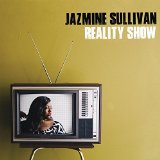 Jazmine Sullivan’s third album comes after a five-year break and follows a period of personal turmoil and subsequent self-discovery for the big-lunged Philly r’n’b singer. “Reality Show” may suggest something both toe-curlingly revealing and tackily brash but Sullivan’s elegant but charged timbre and monologues couldn’t be further from this. There is also some fun to be had to here though, more than might possibly be expected given the reason for Sullivan’s break, and a distinct cohesiveness throughout which given the scattershot of styles chosen is quite an accomplishment. And this is an album that Sullivan has invested heavily in; co-producing, writing and selecting material that reflect her choices as an artist returning to the game where even a year out can result in negative speculation.
Jazmine Sullivan’s third album comes after a five-year break and follows a period of personal turmoil and subsequent self-discovery for the big-lunged Philly r’n’b singer. “Reality Show” may suggest something both toe-curlingly revealing and tackily brash but Sullivan’s elegant but charged timbre and monologues couldn’t be further from this. There is also some fun to be had to here though, more than might possibly be expected given the reason for Sullivan’s break, and a distinct cohesiveness throughout which given the scattershot of styles chosen is quite an accomplishment. And this is an album that Sullivan has invested heavily in; co-producing, writing and selecting material that reflect her choices as an artist returning to the game where even a year out can result in negative speculation.
“Dumb” is the smart, albeit misleading, opener and first single of “Reality Show”. Smart because it immediately reconnects to the Sullivan sound of 2008’s, Grammy-nominated “Bust Your Windows”; it’s operatic, audacious and built around that mesmerising pure soul voice. It’s also a very good song and sounds very much of its time. Misleading in the sense that it doesn’t reflect the rest of the album, at least sonically. It makes its point, sets the scene before retreating to allow for more subtle and unexpected sounds.
“Mascara” is one of a triptych of songs that have a sixties girl group sentiment and sound. The most contemporary sounding of the three, “Mascara” is a lyrically ambiguous song that at first seems to be a ‘make the best of yourself’ ode to faking it when you’re actually breaking down a little inside. A closer listen confirms that Sullivan has adopted the persona of a defensive, insecure woman who hates other women and would do anything to keep hold of her partner, whatever the compromise in her dignity. It’s smart and buoyant and proves Sullivan can trip up a complacent listener. “Stupid Girl” is a juddering, snare rolling retro track that brings to mind Mark Ronson’s more playful Amy Winehouse productions and the relentless Motown thwack of “If You Dare” sends Sullivan soaring above a positive-thinking anthem that has genuine energy and power.
“Silver Lining” is a glorious, airy late seventies r’n’b style mid-tempo track where vocally Sullivan conveys desperation, optimism and indifference over three minutes so effortlessly that it’s hard to avoid comparisons to the truly great soul vocalists from the past four decades. “#HoodLove” also has moments where it’s possible to believe that Aretha Franklin herself has made a hard – nosed but ultimately romantically blind-sighted (‘he aint always right, but he’s just right for me’) ghetto tribute. “Masterpiece (Mona Lisa)”, an ode to self-acceptance, takes its sonic cues from eighties Quincy Jones balladry and the electro-disco of the brilliant and inspired “Stanley”, an obvious highlight here, features a surprising sample of Annie’s Scandi-pop hit “Greatest Hit” of all things. A put upon girlfriend, Sullivan urges her feckless Stanley to wake up, smell the roses and ‘take a bitch to dinner!’
At a time when female r’n’b is confidently stepping out of the rut it tended to find itself in during the EDM days of the early 2010s and could indeed be heading for another renaissance period, Jazmine Sullivan has made an album which sounds reassuringly timeless in spite of its various retro influences. Although there are still many detailed and modern sonic flourishes here, the spotlight, as might be expected, falls on Sullivan’s exceptional vocal abilities and for the best part, the songs are more than good enough to support her talent. There may be little here that is ground-breaking but Reality Show has little use for trick photography or fashionable gimmicks. Jazmine Sullivan is a shocking scene stealer and is wonderfully showcased here on what may well be her most thought out and intriguing album.
Our next contributor plays saxophone with Southside Johnny and The Asbury Jukes but also released a strikingly good album this year as part of the New York Horns which is one of Allan’s albums of the year. When we asked him for a High Fives piece, here’s what he came up with. We think you’ll like this.
5 Horn Sections That Changed My Life
As a saxophone player, one of my absolute favorite ways to make music is with other horn players. Give me a trumpet or two, a couple of other saxophone players and a trombone to add some love, and you’ve got a recipe for a whole lotta fun. If the rhythm section is the meat and potatoes, and the vocalist is dessert, then the horn section is the salt. We bring out all the other flavors and make everything oh so much sweeter.
In thinking about the subject matter for this best-of list, it quickly dawned on me that I had MANY more than five examples that I could draw upon to make my point. So many that I almost gave up! After some careful consideration though, here’s five of the horn sections that have changed my life through their contributions to the music:
THE swingin-est band in the history of jazz. Count Basie’s band emerged in the 1930’s in Kansas City, and became the de facto definition of foot-stomping swing with their penchant for shouting blues, riffing head arrangements, and an infectious groove that just made you want to dance. The jazz traditions of “riffing” and “head arrangements”, while not originating with the Basie band, were certainly developed and forwarded onward by the band. Many of the riffs, licks and phrases that you will hear modern horn sections play can trace some or part of their lineage back to the Basie band. Check out “The Atomic Mr. Basie” (1957) and “Count Basie Swings, Joe Williams Sings” (1956). Two of my all time favorite Basie albums.
James Brown redefined popular music. He also redefined the role of the horn section in popular music. Prior to his influence, horns would generally have a more melodic role – playing melodies and generally being in a “lead” role. The late swing and early jump blues bands often were led by horn players and under the vocals the horns played a large supporting role, remaining a mostly harmonic underpinning. James changed all that. The horn section under James Brown became another rhythmic instrument, driving and propelling the groove. With snapping rhythmic pulses and repeating motifs, the horn section was another texture in the rhythm section, adding propulsion and rhythmic intensity. Check out “Mother Popcorn”, “Super Bad”, “Soul Power” and “Cold Sweat” for classic examples. The JB Horns (Maceo Parker, Fred Wesley, Alfred “Pee Wee” Ellis) also were a fixture of P-Funk and Bootsie’s (Collins) Rubber Band, as the Horny Horns.
Growing up in North Carolina, in the southern United States, it was inevitable that I was exposed to the music coming out of Memphis, Tennessee and especially STAX Records. Wayne Jackson and Andrew Love, aka the Memphis Horns, are one of the most recorded horn sections in history. If you’ve heard “Dock Of The Bay”, “Soul Man”, “Hold On I’m Comin’”, “Suspicious Minds”, “Sweet Caroline”, “Takin’ It To The Streets”, “Let’s Stay Together”, “Born Under A Bad Sign”, “Knock On Wood” (and countless other hits), then you’ve heard the Memphis Horns. They appeared on virtually every STAX recording, backing Otis Redding, Sam & Dave, Eddie Floyd, Carla & Rufus Thomas and an endless list of others. Not only were they a staple of the Memphis scene but could also be found as part of the Muscle Shoals scene, and on recordings with Aretha Franklin and Wilson Pickett.
No modern horn player that plays funk, soul or R&B hasn’t heard of or spent time studying TOP. Bursting onto the scene in Oakland, CA in 1968, Tower saw its peak success from 1973 to 1974. The band continues to tour extensively to this day, playing hundreds of shows every year across the world. The horn section has been featured on countless recordings by artists as diverse as Little Feat, Graham Central Station, The Monkees, Santana, Elton John, John Lee Hooker, Rufus, Rod Stewart, Huey Lewis and the News, and Aerosmith and has come to define a punchy, modern and funky style of writing and performing for horns. Check out “Tower of Power” (1973) and “Back to Oakland” (1974) for the definitive TOP experience.
While not a horn section unto himself, Jerry Hey has probably written more horn arrangements for hit songs and albums than anyone else in the business. As part of the Seawind Horns, Jerry was brought to the attention of Quincy Jones. That relationship led to Jerry’s writing for some of the biggest names in the industry. His credits as an arranger include albums from Michael Jackson, Brothers Johnson, Donna Summer, Rufus, George Benson, Patti Austin, James Ingram, Frank Sinatra, Barbra Streisand, Earth, Wind and Fire , Al Jarreau, Chaka Khan, and the list goes on… Two of my favorite albums that feature Jerry’s writing (and the Jerry Hey Horns) extensively are Al Jarreau’s “Jarreau” and “High Crime” (Check out “Imagination”!) and likely my all time favorite Jerry Hey arrangement (and performance) is from Michael Jackson’s “Workin’ Day And Night” (“Off The Wall”).
I could go on and on… there are so many great horn sections, players and writers out there, making incredible music. Hopefully this list will give you some food for thought and a good place to begin to explore the horn section legacy. Enjoy!




